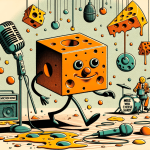Wherever something seems mysterious or inexplicable, stories pop up as an explanation; this is where we get our ghost stories from. So, it was probably inevitable that urban legends would spring up during the ‘80s and ‘90s, a time when technology was progressing at rapid rate. When kids spend enough time staring at their gaming laptops or with a controller in their hands, their imaginations are likely to run wild. And like all good urban legends, at least one of these popular video game myths turned out to be true.
You can blow in an NES cartridge to make it work.
We’ve all done it, but blowing on the metal contacts of a game cartridge is really more a hopeful ritual than actual science. The idea was that you were blowing dust off the metal so it could make a reliable connection with the game console. But moisture and particles from your breath could actually dirty the contacts or cause corrosion over time. This legend was more likely the result of impatience to play Metroid than it having any technical benefit.
Super Mario Bros. is communist propaganda.
You can understand the confusion. He wears all red, has a massive, Stalin-esque nose-neighbor, he’s the very symbol of the socialistic worker, and he’s constantly trying to overthrow the legitimate monarch, King Koopa, to give power to the people. But that’s really all that the Red-scare conspiracy theorists had. It was the ‘80s; we can forgive them.
Polybius makes players go insane.
A government conspiracy to test a psychoactive video game on an unwitting public? Who wouldn’t want that to be true? The roots of this legend go back to 1981, when rumors surfaced about a standup arcade game that caused kids who played it to become depressed, suicidal or psychotic. As with all good urban legends, nobody could seem to agree on details like what the game-play was like or who was responsible for the game. In fact, there was no real evidence that the game ever existed.
The title of “Donkey Kong” was a mistranslation.
An admittedly strange name for a video game sparked speculation that the original name for the game was “Monkey Kong.” Various other explanations were given for the mix-up, including a distorted fax to the American distributors or a garbled conference call. But the game’s creator, Shigeru Miyamoto, was clear that he absolutely chose the name, saying that he wanted the angry gorilla to have a name that evoked stubbornness. It wouldn’t be the last strange title to come out of Japan.
Atari buried millions of game cartridges in a landfill.
This one actually turned out to be true. Right after Atari released a game based on the movie, E.T., sales plummeted. Game sellers returned their unsold cartridges to the company, which incurred huge losses. The company ended up burying the excess inventory in a New Mexico landfill, crushing them beforehand with a steamroller to discourage looting.
Players on Madden covers are doomed to injury.
After several prominent players, who appeared on the obligatory annual release of Madden NFL video games, fell into professional obscurity or injury, rumors of a “Madden curse” were bound to follow. Similar rumors often creep up when prominent people experience bad luck. It’s away for us to try and correlate misfortune with some type of justification. Pro-football players may be more prone to fall from grace or get injured than regular folks, but it’s unlikely the John Madden has the voodoo to bring them down.
Urban legends have always been around, and it’s unlikely that conspiracy theories will stop circulating with the viral power of the Internet to propel them. And truth can even be stranger than fiction sometimes. So, the next time you here an outlandish story that you think might be a myth, don’t be super-quick to dismiss it.










